
Today, 29th August, is the Feast of the beheading of St John the Baptist. Lovely!
In today’s talk, I share the story behind this Tudor holy day, a story which is often depicted in illuminations in manuscripts and psalters.
[Read More...]
Today, 29th August, is the Feast of the beheading of St John the Baptist. Lovely!
In today’s talk, I share the story behind this Tudor holy day, a story which is often depicted in illuminations in manuscripts and psalters.
[Read More...]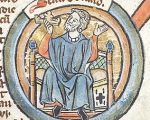
Today, 13th October, is the feast of St Edward the Confessor, the Anglo-Saxon king who reigned from 1042 to 1066 and who was canonised in 1161
St Edward’s Day was the traditional day for the mayor of London to be chosen by the freemen at Guildhall.
[Read More...]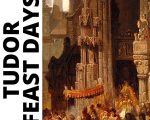
The eighth book in our exclusive Tudor Society e-book series is now available and this one takes you through the calendar year one feast day at a time. Learn about how the religious calendar affected the daily lives of the Tudors in our Feast Days e-book.
[Read More...]
The Feast of St Mary Magdalene (or Magdalen), “apostle to the apostles” and the woman said to have witnessed Christ’s crucifixion and resurrection, has been celebrated on 22 July since the 8th century.
[Read More...]
In today’s Claire Chats video, Claire talks about the cycles of mystery plays which were performed on the feast day of Corpus Christ in the medieval and Tudor periods.
[Read More...]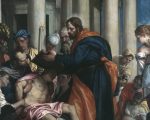
The 11th June is the feast day of St Barnabas, an early Christian who was born Joseph in Cyprus. He was renamed Barnabas when he joined the Apostles in Jerusalem. He carried out several missionary journeys with Paul the Apostle and is mentioned in the Book of Acts. According to Christian tradition, Barnabas was martyred in Cyprus in 61 AD, being stoned to death. He is seen as the founder of the Cypriot Orthodox Church.
[Read More...]
The four weeks of Advent began on Advent Sunday, the fourth Sunday before the Nativity, and was a time of fasting, i.e. abstaining from meat. Christmas Eve was even stricter than the rest of advent, with no meat, cheese or eggs being eaten, until after midnight mass when it was officially Christmas Day.
[Read More...]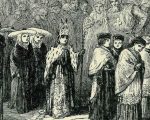
The 6th December was and is the feast of St Nicholas, or St Nicholas of Myra, the 4th century Bishop of Myra (modern-day Demre in Turkey), who is the patron saint of children, as well as sailors, merchants, archers, repentant thieves, brewers, pawnbrokers and students. In medieval and Tudor times, it was traditional for a choirboy to be chosen on 6th December or Childermas (Holy Innocents’ Day) as “Boy Bishop” to act as bishop and to lead processions around communities, collecting money for the church and parish funds, and to lead some religious services.
[Read More...]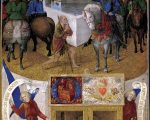
All Saints Day was the celebrated on 1st November every year. It was a feast day in honour of all the saints and martyrs and was established because there were not enough days in the year to commemorate the lives of all the saints. Pope Urban IV said of it: “Any negligence, omission and irreverence committed in the celebration of the saints’ feasts throughout the year is to be atoned for by the faithful, and thus due honor may still be offered these saints.”
[Read More...]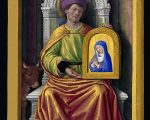
In the medieval period, wakes were held to mark the end of summer and to dedicate the local church. The feasting and partying could go on for days, so, in 1532, Henry VIII stamped down on this practice and ordered that the first Sunday in October was the day for local parish churches to hold their dedication service.
[Read More...]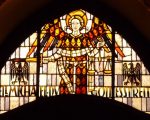
The festival of ‘harvest home’ or ‘ingathering’ was, and still is, celebrated when the harvest was safely done. It was a thanksgiving for God’s help with the harvest and for the crop. It was essential to get the wheat and barley in before the autumn rains and cooler weather, otherwise the community could face starvation – wheat was needed for bread and barley was needed for ale. Professor Ronald Hutton explained the importance of the harvest in the TV series “Tudor Monastery Farm”. He explained that Bloody Flux, a disease common in the Tudor period, was actually caused by malnutrition because when the body was completely famished it suffered an intestinal haemorrhage. Famine was what happened when there was a bad harvest so people celebrated a good harvest and gave thanks for their farming success.
[Read More...]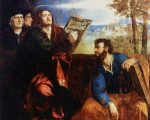
This was an ancient Celtic festival and marked the start of the wheat harvest. After the first crops were safely brought in, the first loaves baked with the wheat from this harvest in each household would be taken to church and blessed as a thanksgiving for the harvest. This would be followed by a celebratory feast.
[Read More...]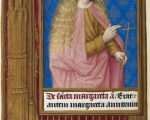
The Visitation of the Virgin was a feast day commemorating the pregnant Virgin Mary visiting her cousin Elizabeth, who was pregnant with John the Baptist. This visit was recorded in the Book of Luke and Luke records how the baby in Elizabeth’s womb “leaped” when Elizabeth heard Mary’s greeting and that “Elizabeth herself was filled with the Holy Ghost; so that she cried out with a loud voice, Blessed art thou among women, and blessed is the fruit of thy womb.”
[Read More...]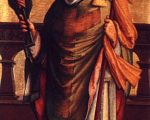
This feast day commemorates the martyrdom of St Erasmus/St Elmo of Formia, Bishop of Formium in Italy. He was tortured and executed for being a Christian in the year 303. He is vemerated as one of the Fourteen Holy Helpers, saints whose intercession is believed to be particularly effective against disease.
[Read More...]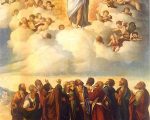
Rogationtide (from the Latin rogare: ‘to ask or beseech’) is the three days leading up to the Feast of the Ascension, which is celebrated forty days after Easter Sunday and which commemorates the Ascension of Christ into Heaven. It is celebrated on the fortieth day after Easter because of what it says in Acts 1 verse 3:
[Read More...]
1 May, or May Day, was seen as the first day of summer and had its roots in ancient celebrations of fertility. It was celebrated with special processions, plays and pantomimes, pageants, Morris dancing and the crowning of a May Queen. There would also be a Maypole, a tall wooden pole decorated with greenery and flowers and hung with ribbons. People would hold the ribbons and dance around the Maypole weaving the ribbons together in patterns.
[Read More...]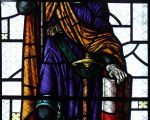
23rd April is the feast day of St George, who we know today as the patron saint of England. It is the traditional date given for his execution in 303 AD. St George was a Roman soldier who was imprisoned, tortured and beheaded for his Christian faith after he protested against the persecution of Christians.
[Read More...]Mothering Sunday in the Tudor era.
[Read More...]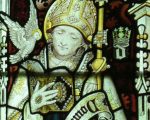
1st March is the feast day of St David (Dewi Sant), patron saint of Wales. According to Rhigyfarch’s Life of Saint David, David lived in the 6th century and founded religious centres including Glastonbury and Croyland. He then travelled to the Holy Land and was made archbishop at Jerusalem before travelling back to Wales and settling at Glyn Rhosyn (Rose Vale), or St David’s, in Pembrokeshire, Wales. There, he founded a monastery whose site is now marked by St David’s Cathedral.
[Read More...]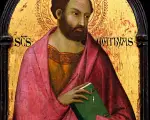
If you haven’t taken down your Christmas decorations yet then don’t worry, you’re just following the medieval and Tudor tradition of taking them down on Candlemas Eve. 1st February was the traditional day for removing the greenery, such as laurel, holly, ivy and rosemary, which had decorated homes over the Christmas period. However, Candlemas Eve really is your last chance to rid your home of decorations and please don’t leave them up otherwise you may just get invaded by goblins!
[Read More...]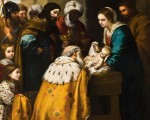
In medieval and Tudor times, the calendar year actually began on 25th March, Lady Day, but confusingly (for us anyway!) the Roman tradition of New Year was celebrated on 1st January. This was a time for the nobility and monarch to exchange gifts. The king would get dressed in his chamber and then wait for one of his consort’s servants to bring in the gift from the queen. He would then accept gifts from other courtiers and the queen would do the same in her chamber. This gift giving was an ideal opportunity for a courtier to try and win favour from the monarch or to impress the monarch with a lavish gift.
[Read More...]
In the medieval and Tudor era the feast of St Matthias the Apostle was celebrated on 24th February, whereas today it is celebrated on 14th May. I have read also that the feast was celebrated on 25th February in Leap Years so perhaps I ought to be actually posting this tomorrow!
Matthias was not one of the original twelve apostles, he was chosen after the Ascension of Jesus by the remaining eleven apostles to replace Judas Iscariot. Why was it important to replace Judas? The Catholic Online website explains: “Twelve was a very important number to the Chosen People: twelve was the number of the twelve tribes of Israel. If the new Israel was to come from the disciples of Jesus, a twelfth apostle was needed.” The Book of Acts explains what happened:
[Read More...]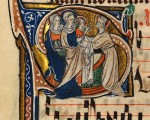
Candlemas, or the the Feast of the Presentation of Christ in the Temple and the Purification of the Blessed Virgin, is celebrated on 2nd February. It commemorates the purification (or churching, as medieval people would have seen it) of the Virgin Mary forty days after the birth of Jesus Christ, when it was traditional for the mother to make an offering or sacrifice according to Jewish law, and the presentation of the baby Jesus at the temple in Bethlehem.
[Read More...]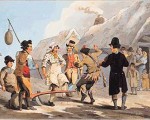
Plough Monday was the first Monday after 6th January and was the day on which things would return to normal after the Twelve Days of Christmas and people would return to work. It was also the first day of the new agricultural year and 16th century poet and farmer Thomas Tusser wrote:
Plough Monday, next after that Twelfth tide is past
Bids out with the plough, the worst husband is last.